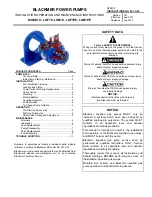
Solvent Considerations
99
C
C.3 Solvent Miscibility
Before changing solvents, refer to
to determine the miscibility of the solvents to
be used. When changing solvents, be aware that:
•
Changes involving two miscible solvents may be made directly. Changes involving
two solvents that are not totally miscible (for example, from chloroform to water),
require an intermediate solvent (such as methanol).
•
Temperature affects solvent miscibility. When running a high-temperature application,
consider the effect of the higher temperature on solvent solubility.
•
Buffers dissolved in water may precipitate when mixed with organic solvents.
When switching from a strong buffer to an organic solvent, flush the buffer out of the
system with distilled water before you add the organic solvent.
Table C-4 Organic Solvents for Use with the 1525 HPLC Pump
Organic Solvents
4-Cyanophenol
Chloroform
Ethylene glycol
Methylene chloride
Acetone
Cyclohexane
Formaldehyde
n-Propanol
Acetonitrile
Cyclohexanone
Heptane
Phenol
Amyl acetate
Dibutyl phathalate
Hexane
Tetrahydrofuran
(THF)
Benzaldehyde
Dimethyl formamide
Isooctane
Toluene
Benzene
Dimethyl sulfoxide
Isopropanol
Waters PIC
®
Reagents
Benzyl alcohol
Ethanol
Lysine hydrochloride Xylene
Butanol
Ethyl acetate
Methanol
Carbon
tetrachloride
Ethylene dichloride
Methyl ethyl ketone
Summary of Contents for 1525EF
Page 6: ......













































